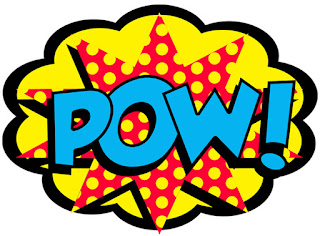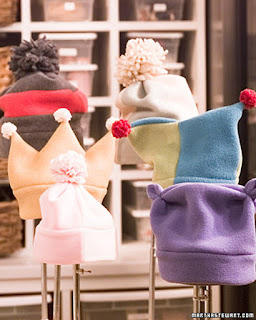Felting wool means shrinking it—on purpose! While results will vary from one type of wool to another, most will shrink quite dramatically and take on a tighter feeling, felt-like finish. The key is, you must use 100% WOOL fabric. Grab a few old all-wool sweaters from your closet or a second-hand store—the kind with holes in the elbows, or stretched out edges. With just a little effort, you can transform an "undesirable" into a pair of funky (and functional!) mittens. Here's how.
MATERIALS
At least one old 100% wool sweater (as long as you're going to the effort, you might as well felt a few - up to four or five will fit in the washing machine)
A bit of dishwasher detergent (not dish soap!)
Pattern tracing material
J & P Coats embroidery floss or Red Heart Yarn
INSTRUCTIONS
Before You Sew:
Loosely arrange the sweaters in the washing machine. Add a small amount (maybe 1/8 - 1/4 cup) of dishwashing detergent, then fill the machine using a "hot water wash/cold water rinse" cycle.
Machine dry the sweaters on the hottest temperature setting.
Ready, Set, Sew:
 Make a mitten pattern by tracing your own hand (or someone else's) onto pattern tracing material.
Make a mitten pattern by tracing your own hand (or someone else's) onto pattern tracing material.
Lay out the pattern on your felted sweater, playing with placement until you find just the right look. Sweaters with multi-colored designs or special stitches, like cable knits, offer lots of possibilities—enjoy! You can also utilize the ribbing on a sweater's lower edge, though don't expect it to be particularly functional. Once the sweater is felted, much of the stretch is long gone. So you'll find these mittens aren't snug fitting. But they are very cool—and warm at the same time!
Cut two mittens on a double-layer of fabric. Using a 1/4" seam allowance, stitch each set together along the outer edge using a straight running stitch, whipstitch or blanket stitch. Perfect stitches NOT required. You can also machine stitch using a long stitch length (5.0mm).
To do the running stitch, use yarn or heavy thread like embroidery floss—all strands in the skein—and a large-eyed needle. Then just run the needle in and out of the fabric.
If desired, add a final row of the running stitches around the "cuff" area, gathering slightly and finishing with a bow. Or add button embellishments—whatever your pleasure.
Original source: SYSF
[Edit 12/16] The original source for this project appears to no longer be on the Web, although the instructions are pretty easy to follow. You can also find similar instructions (with pictures) at Dabbled.org.
If you like green / eco-conscious gifts, you might want to check out:











































